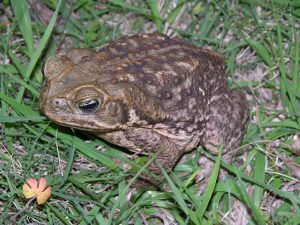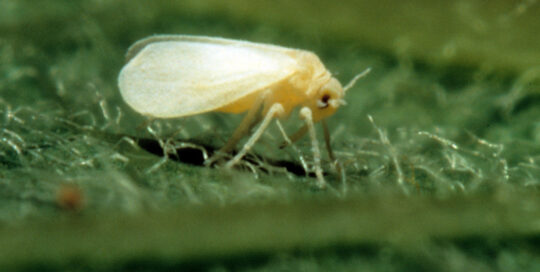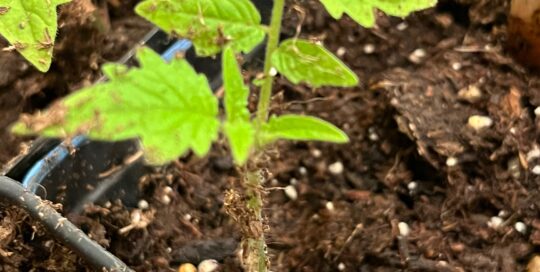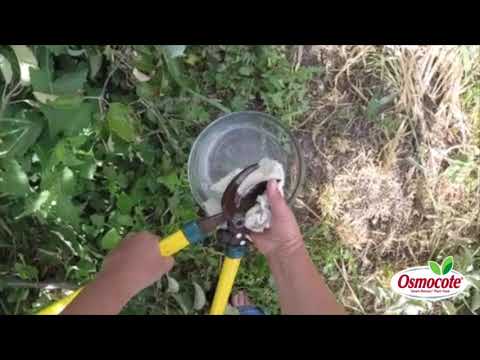Beware the Cane Toad
Views: 7995

Anytime I whine about living in a cold region, I learn about a garden pest or animal that makes me happy to be in our little ice box. Last week, I found out about cane toads (Rhinella marina), a species native to South and Central America, but one that was brought to Florida to eat grubs from sugar fields. From reports, these original populations didn’t take hold. Then, according to the University of Florida’s Wildlife Extension, pet dealers released 100 cane toads in the 1950s (some say accidentally, other accounts say deliberately). They’ve since assimilated into the population.
Protect Pets from Cane Toads
Like many non-native and invasive species, cane toads are upsetting the ecological balance in Florida.
While Florida is no stranger to frogs and toads, the cane toad is a voracious eater, often preying on native species of amphibians, reptiles, and small mammals. It’s like the bullfrogs here in Montana. They will eat other frogs, and even birds. The Audubon Conservation Center in Billings found an oriole in the stomach of one over a year ago.
That’s disturbing.
Although the native southern toad and oak toads secrete poison from their paratoid glands, which are situated on the shoulders of the toads, the substance excreted from the cane toad is much more potent. When a dog, for example, licks or picks up the toad, it can receive a fatal dose. If your pet goes into convulsions, paces, shakes, drools, or has gums that are very red, wash out the dog’s (or cat’s) mouth and take it to the vet immediately. With early treatment they usually will survive, but there are plenty of pets that die each year from exposure to the toxin.
Toads also love pet food. Many of us understand the problems with leaving pet food on the porch. In some parts of the country, raccoons and skunks come in to feed, while in others it’s an invitation for bears. If nothing else, I’ve seen where it brings in feral cats from the neighborhood who end up fighting over the food. But in Florida, the cane toad is the threat. And, unfortunately, they have a potent defense system if a curious, or jealous, pet defends its dinner.
Humans and Cane Toads
As you might guess, it’s not a good idea for you to pick up the toad without protection, either. The toxic substance can irritate your skin. I can see we would have a problem with them here, because my boys would probably be collecting them!
To tell the difference between the cane toads and native species, one of the first things to consider is the size. Cane toads will be 4-6 inches long, yet the natives max out around 4 inches. The paratoid glands on the cane toads are large and triangular in shape. The ones on the native toads are oval. And, to tell the difference between a cane toad and southern toad, look for the ridge on the top of the head of the southern toad.
There are excellent photos to show the difference on the University of Florida’s site.
So I’ll just be happy I live in a region where we don’t have to worry about what toads or frogs we catch. For all of my friends in Florida, please know your frogs before you pick them up.
The photo of the cane toad is used with the permission of Dr. Steve A. Johnson, University of Florida.
Meet Amy Grisak
Amy is a freelance author and photographer in Great Falls, MT who specializes in gardening, foods, and sustainable agriculture. She provides information on every kind…
Amy's Recent Posts

Watch Out for Silverleaf Whiteflies








